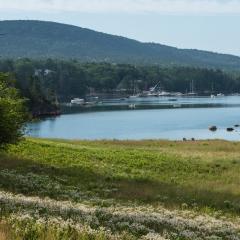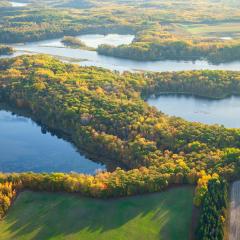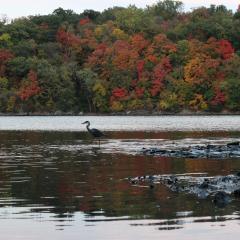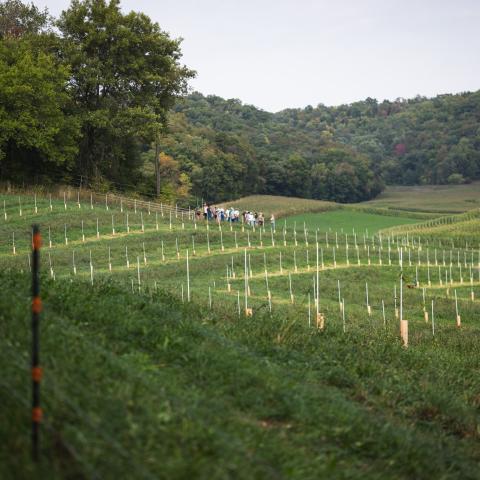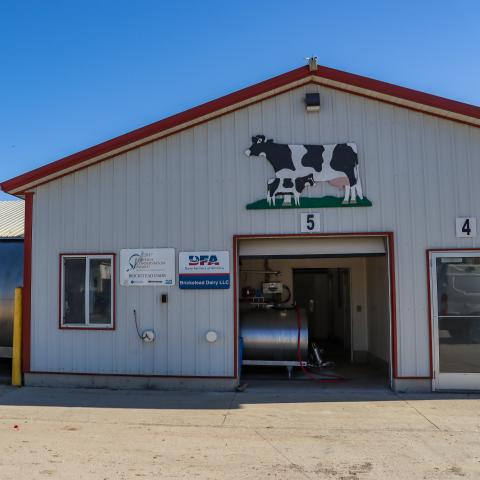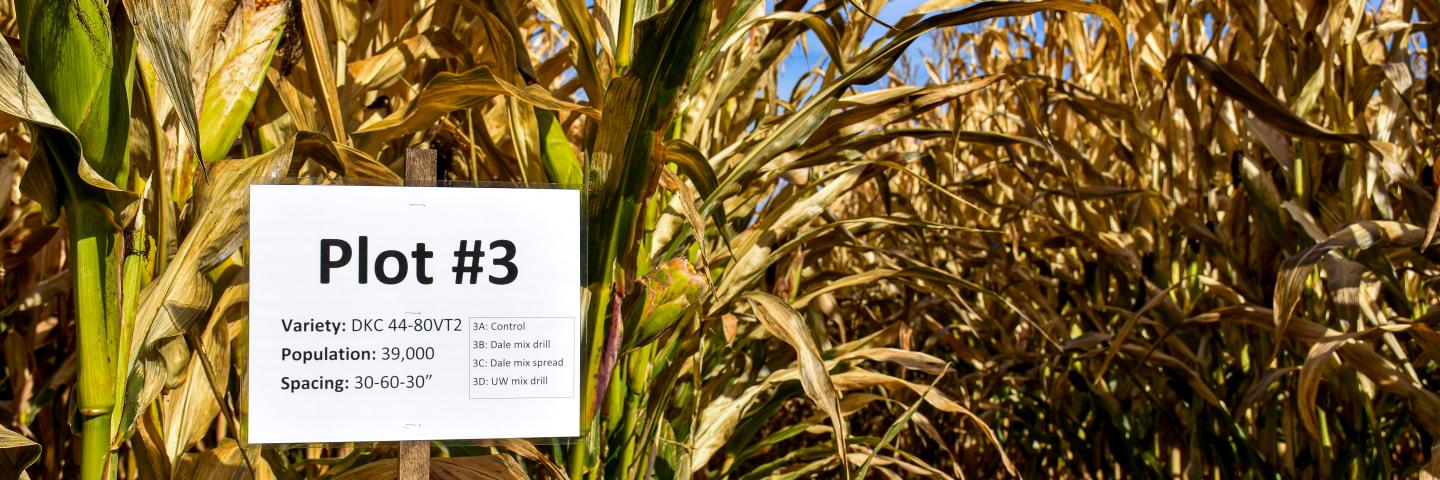
NRCS Wisconsin's Demonstration Farm Networks showcase the best, leading-edge conservation practices to reduce phosphorus and sediment from entering watersheds vital to our nation's drinking water supply.

NRCS Demonstration Farm Networks showcase the best, leading-edge conservation practices to reduce phosphorus and sediment from entering watersheds vital to our nation's drinking water supply. There are eight demonstration farm networks across Wisconsin, each comprised of conservation and soil health-minded farmers leading the way in partnership with local agencies and NRCS. These networks of farms are demonstrating new approaches and sharing experiences with other farmers to move conservation forward for the protection of natural resources and the Wisconsin watersheds that feed the Great Lakes and the Mississippi River Basin. Networks also offer field days and opportunities for farmer-to-farmer interactions with on-site examples. Demonstration Farms are trying new practices and approaches to existing practices like no-till, cover crops, and low disturbance manure applications that farms can implement on the ground to make their goals reachable, with assistance from NRCS.
Great Lakes Restorative Initiative Demo Farm Networks
Between the Lakes Demo Farms Network
Northeastern Wisconsin’s Manitowoc-Sheboygan Watershed is home to a network of farms demonstrating the best conservation practices to protect water sources that flow into the Great Lakes. Calumet County Land and Water Conservation and the NRCS are tackling this effort in partnership with Fond du Lac, Sheboygan and Manitowoc counties. These farmers are demonstrating conservation practices and systems used to reduce non-point source pollution. The network highlights implementing traditional conservation practices that protect water quality, while also trying and highlighting new technologies on participating farms.
Door-Kewaunee Watershed Demo Farms Network
Northeastern Wisconsin’s Door-Kewaunee Watershed is home to a network of farms demonstrating the best conservation practices to protect the Great Lakes. The Wisconsin Department of Agriculture, Trade and Consumer Protection and the NRCS are tackling this effort in cooperation with Peninsula Pride Farms, a farmer-led organization. Groundwater and surface water quality are top priorities for the farmers of this network, who contend with shallow, fractured bedrock that can provide a direct path for contaminants to groundwater.
Green Bay West Shore Demonstration Farms Network
The NRCS and Oconto County Land & Water Conservation Department, in partnership with Marinette and Shawano counties, have entered an agreement to launch a new network, the Green Bay West Shore Demonstration Farm Network. This is the sixth Demonstration Farm Network in Wisconsin that NRCS has collaborated with conservation partners to establish. The new partnership will support a network of farms demonstrating the best conservation practices to reduce phosphorus and sediment into local water sources that flow into the Great Lakes. The network will demonstrate proven traditional and new, innovative conservation practices on farms that are both viable and sustainable for farm owners and the environment.
Ozaukee Demonstration Farms Network
Ozaukee County is home to a network of Demonstration Farms that are trying and demonstrating the best conservation practices to protect the Great Lakes by reducing phosphorus and sediment from entering Lake Michigan through Sauk Creek, Sucker Creek and the Milwaukee River. Ozaukee County Land and Water Management and the NRCS are tackling this effort in cooperation with Clean Farm Families, a farmer-led conservation organization. Major focuses are improving soil health and condition, encouraging innovative land management that reduces costs and increases profits and improving the conservation systems used to reduce non-point source pollution. Network farmers are working to keep ground and surface water clean to protect local streams and rivers feeding the Great Lakes.
Lower Fox Demonstration Farms Network
The Lower Fox Demonstration Farms Network (“Fox Demo Farms”) is an off-site project designed to showcase and demonstrate leading edge conservation practices that improve Great Lakes water quality by reducing phosphorus and sediment from entering Green Bay and Lake Michigan. The partnership was the first of its kind in the Great Lakes region and within the Fox River Basin. Partners include farmers, their crop consultants, Brown and Outagamie County Land and Water Conservation Departments, the NRCS, University of Wisconsin–Extension and the Great Lakes Commission.
Upper Fox-Wolf Demonstration Farms Network
Waupaca County is home to a network of farms demonstrating conservation practices to protect the Great Lakes. Waupaca County Land and Water Conservation and the NRCS are tackling this effort in partnership with Fond du Lac, Green Lake, Marquette, Outagamie, Portage, Shawano, and Winnebago counties and the Green Lake Association. This large partnership is testing the effectiveness of current conservation systems used to reduce non-point source pollution. The network will demonstrate to farmers and the public that the right combination of traditional conservation practices and other new, innovative technologies functioning on the landscape can produce viable and sustainable economic and environmental benefits.
Map of Wisconsin's GLRI Demo Farm Networks

Mississippi River Basin Initiative Demo Farm Networks
Dane Demo Farms Network
Brand new as of September 2023, Dane Demo Farms is a network of farmers that demonstrate and research leading edge conservation practices that improve water quality and soil health throughout Dane County. Their efforts help reduce nutrients and sediment from entering our waters and build healthy soil. The partnership is the first of its kind in the Mississippi River basin and currently consists of three farmers within Dane County, their crop consultants, Dane County Land & Water Resources Department, the University of Wisconsin - Madison Division of Extension, and NRCS.
Additional Resources
Savanna Institute Agroforestry Demo Farm Network
The Savanna Institute partnered with NRCS Wisconsin to launch an Agroforestry Demonstration Farm Network in 2024. This Demo Farm Network creates a support system focused on peer-to-peer agroforestry education, demonstration, and research in the state. Wisconsin producers and landholders who join the Demo Farm Network have the important role of helping to demonstrate agroforestry in action to fellow farmers, landholders, researchers, ag and conservation professionals, and the general public.
Some agroforestry practices, such as trees planted in windbreaks along field edges or in riparian buffers along riverbanks, are already common in Wisconsin. Harder to find are demonstrations of alley cropping, where farmers plant rows of trees into crop fields, and silvopasture, where trees are planted in livestock pastures for animal shade and food. If adopted widely, these two agroforestry practices in particular could boost Wisconsin’s agricultural productivity while improving soil health, water quality, and wildlife habitat throughout the state. Savanna Institute’s Agroforestry Demonstration Farm Network in Wisconsin hosts public events, educational resources, and trainings for NRCS staff to help them better serve farmers with the technical assistance needed to integrate trees effectively into farm systems.



